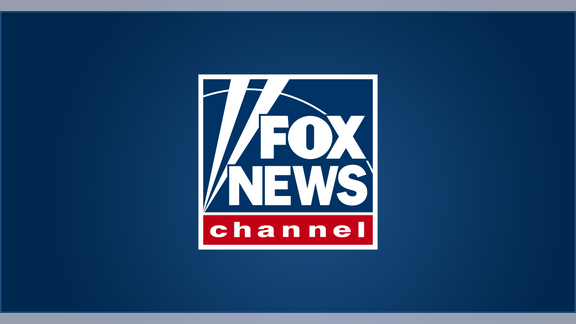The alarm came too late, and the six men aboard the International Space Station hurried to Soyuz escape capsules.
AFP/Getty Images/NASA
This 2009 photo shows Astronaut Michael Fincke performing maintenance on the International Space Station. The space station crew rode out a threat of collision with a debris cloud in a Soyuz space capsule on March 12, 2009.
For a tense two minutes in June, they waited for the "all clear" to come as an unexpected bit of space junk, likely a small piece of an old rocket body or spacecraft, zipped by at 17,000 mph.
"Orbital debris is part of the cost of doing business in space," says space scientist Nicholas Johnson of NASA's Johnson Space Center in Houston, which manages the space station. Like the debris that spurred the alarm in June, and passed safely by, thousands of bits of metal scraps, loose screws, paint chips, big rocket pieces and more are circling the planet at orbital speeds.
"The problem is worse now than it was 10 years ago," said NASA's LeRoy Cain at a July space shuttle mission briefing. "And in 10 years it will be worse still." Every year, about six of NASA's 50 orbiting spacecraft fire their rockets to move out of the way of orbital debris. During July's final flight of Atlantis, the last spacewalk of the space shuttle era briefly faced the possibility of being cut short due to space junk, a piece of metal from a Soviet spacecraft launched in 1970.
When the shuttle docked with the space station, the bump nosed the space station out of the path of the flying material.
"Space is full of debris," Cain said philosophically.
As the scope of the problem grows, the administration has sharpened calls for space-faring nations to confront space junk. The aim: Help protect assets belonging to both nations and private firms, the latter taking on more of a space role now that the U.S. space shuttle program has ended. The issue gets even more attention Thursday when the National Research Council releases a report on protecting spacecraft from debris, old rocket bodies and meteoroids.
Interviews ahead of that report found that ideas range from a $1 billion U.S. Air Force "Space Fence" radar tracking system, to a proposed European Space Agency probe that would spray loose rockets with protective foam, to an Italian spacecraft equipped with robot arms to help de-orbit the biggest pieces of debris.
A man-made problem
A dramatic example of the origins of space debris took place somewhere over Siberia on Feb. 10, 2009. It was then that the Iridium 33 satellite, circling the Earth at 17,000 mph, crossed paths with Cosmos 2251, a retired Russian communications satellite. The angle of the collision created a 26,000 mph smash-up.
Derelict spacecraft, such as the Vanguard 1 satellite launched in 1958 and still circling more than 400 miles high, are the smallest part of the orbital debris problem. However, the Iridium 33 accident showed that collisions that destroy such satellites have the potential to spread even more debris.
A 2007 Chinese anti-satellite test some 540 miles high added about 2,000 bits of debris into orbit, for example, when it blasted the satellite it was targeting.
How big is the problem? Decades of debris orbit overhead. Most of it results when leftover fuel in Russian, Chinese and U.S. rockets bursts after they boost satellites into orbit.
Right now, Johnson says, there are roughly 22,000 objects bigger than 4 inches (some as big as car-sized rocket boosters weighing 9 tons), and perhaps 500,000 smaller ones, down to 0.4 inches across, in orbit.
Most of the mess resides in orbits higher than the space station and Hubble space telescope, around 400 miles up, where the bulk of the 1,000 working satellites in orbit do their business.
Depictions of space junk clouds swathing Earth often overstate how crowded things are in orbit. Space is, of course, vast, and most of the junk and satellites have plenty of room to pass each other at great distances.
But if they hit, "Even something as small as a paint chip moving at 17,000 miles per hour can be a big problem," says orbital debris analyst Roger Thompson of The Aerospace Corp. in El Segundo, Calif.
At those "hyper-velocity" speeds, small bits of space detritus essentially explode when they crash into the aluminum surfaces of satellites, rather than knifing through them.
"At those speeds, the satellites would essentially crumble when they are hit, not flex like metal normally does," Thompson says. Even before Sputnik first went into orbit in 1957, Harvard astronomer Fred Whipple designed the "Whipple Shield" to protect spacecraft from meteor dust in 1948.
Widely used, such shields space aluminum layers outside a spacecraft that catch debris instead of allowing it to punch through a single, thicker, layer of shielding.
The International Space Station possesses more than 100 shields guarding its modules, with the Russian ones somewhat less protected. A 1999 National Research Council report on protecting the space station said it faces a less-than-10% chance of debris punching a hole in a module every decade.
Repairing a hole in a station module would likely require welding from the outside in space, the report concluded, a tough task, because the corridors of the station are too tight for spacewalks inside, and holes may be hidden behind equipment.
There have been tiny collisions, but none bad enough to disable the Hubble space telescope or the space shuttle.
But to put it in perspective, satellites face bigger natural threats from solar flares frying electronics or from larger meteors, estimated to pose roughly twice the risk as man-made space junk, Johnson says. "It is a growing problem, though," he acknowledges. Solutions range from better tracking of the material, to plans to someday pluck the most dangerous space trash out of orbit.
A range of solutions considered
The United States Air Force tracks orbital debris, warning satellite operators everywhere of possible smash-ups. "It's enlightened self-interest. They don't want more collisions creating more orbital debris," says Ray Williamson of the Secure World Foundation in Superior, Colo., an organization that advocates for international cooperation on the problem.
Space junk takes decades to rain out of the sky, slowed very slightly over time by Earth's tenuous upper atmosphere.
Global warming has shrunk the height of the upper atmosphere, and the relatively quiet cycle of solar activity, which expands the atmosphere, over the last decade has extended the longevity of orbital debris.
"Everyone recognizes that space debris is a threat to everyone else," says William Ailor of the Aerospace Corp. "The problem is finding agreement and ways to pay for taking care of the problem."
Broadly, potential solutions come in two flavors: tracking the junk and someday removing it. The Obama administration, in its 2010 space policy announcement, called for the first time for NASA "to mitigate and remove on-orbit debris."
In August, NASA awarded Raytheon $100,000 to develop a Space Debris Elimination (SpaDE) spacecraft.
And in an upcoming Acta Astronautica journal study, Marco Castronuovo of the Italian space agency proposes a grappling spacecraft, that would attach rockets onto the debris and then light the rockets to send the debris into a destructive re-entry to Earth.
Legal niceties may put up a wall to such removal, as the rocket bodies belong to various nations that have yet to come to an agreement on salvage laws for space (nobody wants somebody else touching their spy satellites), Ailor says, but perhaps even more, getting someone to pay for removal poses a problem.
"Sending a satellite back to Earth is not a simple or inexpensive thing," he says, not even counting the insurance costs of a returned rocket, which could potentially land on people or cause some catastrophe that disables the expensive clean-up spacecraft.
Covering debris in foam
In February, a European Space Agency report proposed launching a spacecraft equipped with a robot arm that would encase derelict boosters or spacecraft with foam. The foam would enlarge the surface area of the space junk, increasing its atmospheric drag and leading to a speedier demise when it re-entered. The mission planners projected that the spacecraft would be able to remove the 50 largest pieces of space junk from orbit within 30 years.
A big worry is that debris removal may just create more trash, Ailor notes. A grappling spacecraft might just shred a flimsy rocket booster, sending more paint chips flying. And other nations might not feel thrilled to have a debris removal satellite roaming the space lanes, either, just as capable of de-orbiting a valuable spy satellite as a derelict weather satellite.
On the plus side, removing the biggest derelict boosters with the highest collision risk would be a significant step to keeping things from getting worse, according to a NASA analysis presented at last year's International Astronautical Congress in Prague.
Improving tracking looks cheaper, and less controversial, but it now rests on a proposed $1 billion Air Force "Space Fence," which would use new radars able to track debris as small as 0.4 inches or less, perhaps as many as 200,000 such objects or more, as well as keep an eye on anything else up there.
"We expect to be able to track smaller objects at longer ranges than the existing system," says Dave Gulla of Raytheon in Tewksbury, Mass., which is building a $100 million prototype radar for the new system, and is one of the defense firms competing for the final contract next year. "A better system means we're far less likely to have false alarms," Gulla says, like the one that sent the space station astronauts into escape capsules in June.
For now, tracking looks like a reasonable solution to space debris, Johnson says. "Even if we do nothing, it will only get twice as bad in the next century, and we do manage it now."
Every space agency in the world is aware of the problem, Williamson says, and commercial satellite firms know it is in their interest not to have to worry about something smashing up their expensive assets.
"In the long run, an international civil agency will have to support all space operators, providing information and tackling removal," he says. "We have to do something."


